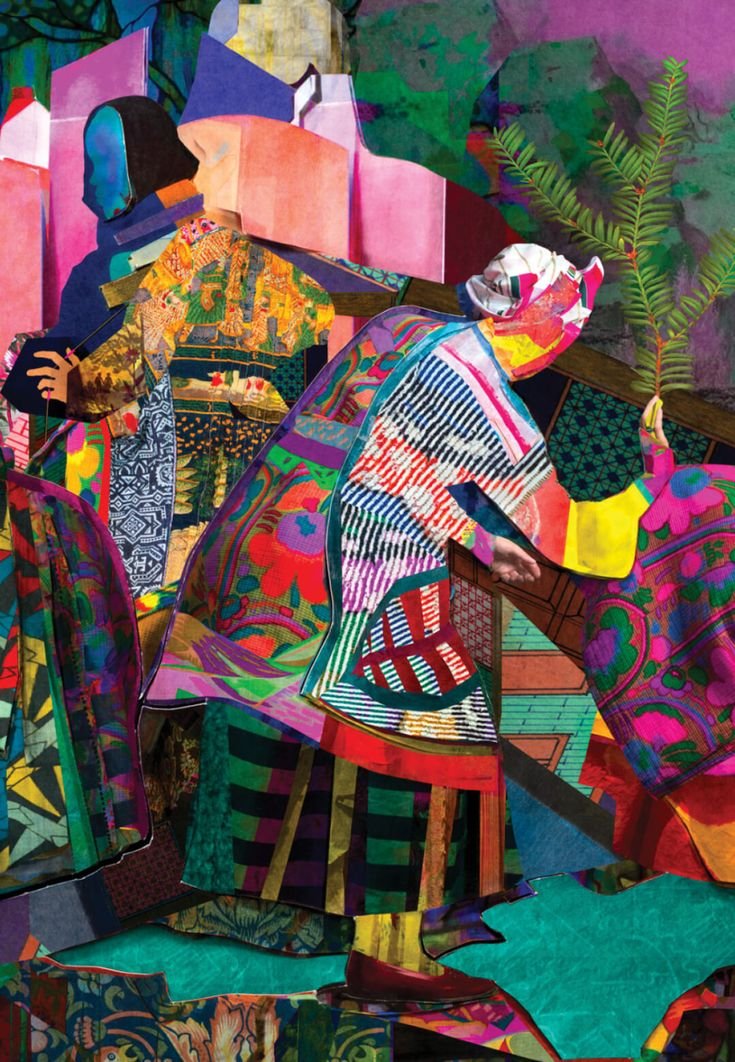In the dynamic landscape of the 21st century, the role of artists has undergone a profound metamorphosis, transcending the conventional boundaries of aesthetics. Today, artists are not merely creators of visually striking works; they have emerged as potent catalysts for social change. This paradigm shift in the purpose of art reflects a broader transformation where creativity converges with activism and the canvas becomes a dynamic platform for dialogue, introspection, and the cultivation of societal transformation.

Art as a Reflective Commentary:
Art has always been a mirror reflecting the zeitgeist of its time, capturing the essence of societal shifts and evolutions. In the 21st century, this reflection has become more poignant and engaged as artists grapple with and interpret complex societal issues, ranging from climate change and inequality to racial injustice and the ethical implications of technological advancements.

The true power of art lies not merely in its ability to evoke emotions, but in its capacity to stimulate thought, challenge societal norms, and inspire tangible action. Contemporary artists are immersing themselves deeply into the fabric of society, crafting works that serve as poignant commentaries on the multifaceted challenges of our era, addressing them with both a local and global resonance.

Activism Through Art: Real-Life Examples
One of the most striking ways artists are becoming formidable agents of change is through embedding activism in their work. Street artists, exemplified by the enigmatic Banksy, have transformed urban landscapes into dynamic canvases of socio-political expression. Banksy’s murals, including the iconic “Girl with a Balloon” and “There is Always Hope,” transcend the boundaries of traditional gallery spaces to deliver powerful messages about hope and societal issues directly to the public. Banksy’s anonymity not only allows for global reach but also emphasizes the universality of the themes he addresses, from immigration to war and government surveillance.

In a more direct engagement with political activism, Chinese contemporary artist Ai Weiwei employs his art to challenge authoritarianism and advocate for human rights. One striking example is his installation piece “Remembering,” where thousands of children’s backpacks were arranged on the façade of the Munich Haus der Kunst. The arrangement formed a sentence translating to “She lived happily for seven years in this world,” serving as a poignant memorial for the victims of the 2008 Sichuan earthquake and a critique of the Chinese government’s handling of the disaster.

Art and Environmental Activism: Real-Life Examples
As the environmental crisis escalates, artists are taking up the mantle of environmental activism, leveraging their creativity to raise awareness about ecological challenges. Olafur Eliasson, a Danish-Icelandic artist, has been at the forefront of this movement. His installation “Ice Watch” involved transporting icebergs from Greenland to major city centres, allowing them to melt and drawing attention to the urgency of climate change. By bringing the effects of global warming directly into public spaces, Eliasson’s work elicits visceral responses, compelling viewers to confront the tangible consequences of environmental degradation and inspiring a collective call to action.

Technology and Social Activism: Real-Life Examples
In the digital age, artists are harnessing technology to amplify their messages and foster global activism. The virtual reality studio RYOT, for instance, utilizes immersive storytelling to transport viewers into the heart of social issues. Their VR experiences provide firsthand encounters with the challenges faced by marginalized communities, fostering empathy and driving social change. By leveraging technology, RYOT brings the immediacy of social issues to audiences worldwide, breaking down geographic barriers and creating a sense of global interconnectedness that fuels collective action.

Artists as Cultural Architects: Real-Life Examples
Beyond addressing urgent social and environmental issues, artists are reshaping cultural landscapes by challenging prevailing narratives and promoting inclusivity. In this regard, performance art has emerged as a powerful medium for confronting societal norms. Marina Abramović’s “The Artist Is Present” is a monumental example, where she sat silently in a museum for 75 days, inviting visitors to share a moment of connection. This performance challenged traditional expectations of art and emphasized the human experience, fostering a more inclusive understanding of artistic expression.

Moreover, the integration of diverse perspectives into artistic discourse is reshaping the narrative of art history. Contemporary artists are actively incorporating varied voices, histories, and experiences into their works, challenging Eurocentric canons. This inclusive approach not only enriches artistic expression but also contributes to a more nuanced understanding of the world and the varied experiences that shape it.

The Intersection of Art and Technology: Real-Life Examples
The convergence of art and technology is opening new frontiers for creative expression. Digital artists like Refik Anadol create immersive, algorithmically generated experiences that challenge perceptions of space and time. His work, “Machine Hallucination,” transforms data into mesmerizing visual narratives, pushing the boundaries of traditional artistic mediums. Furthermore, blockchain technology is revolutionizing the art market, providing artists with tools for transparency and fair compensation. Through blockchain, artists like Beeple tokenize their work, challenging traditional gatekeepers and democratizing the art ecosystem.

In the 21st century, artists have evolved from being mere aesthetes to becoming visionary catalysts for societal change. Through activism, environmental engagement, cultural critique, and the integration of technology, artists are redefining the purpose and impact of art in our rapidly changing world.

These real-life examples not only highlight the transformative power of art to provoke thought and inspire empathy but also demonstrate its capacity to catalyze tangible action. As artists continue to push boundaries and challenge societal norms, their role as cultural architects becomes increasingly significant. Navigating the complexities of the 21st century, artists are not just creators; they are visionaries, shaping the narrative of our collective journey toward a more inclusive, just, and sustainable future.


